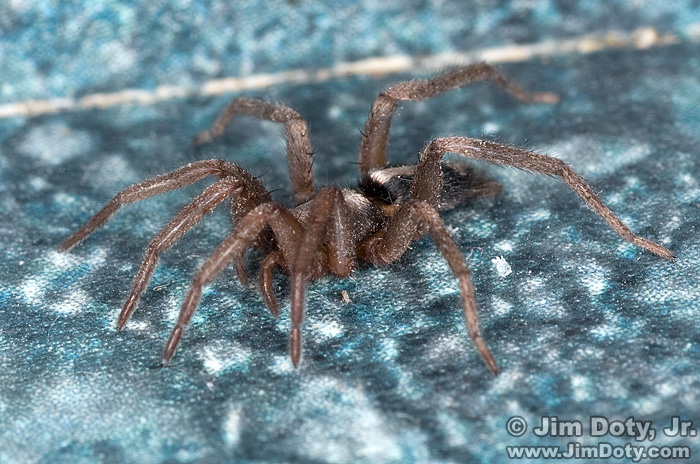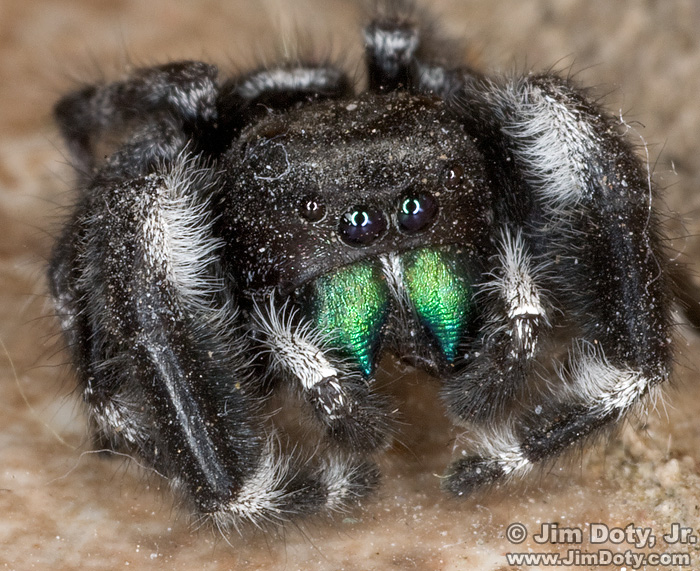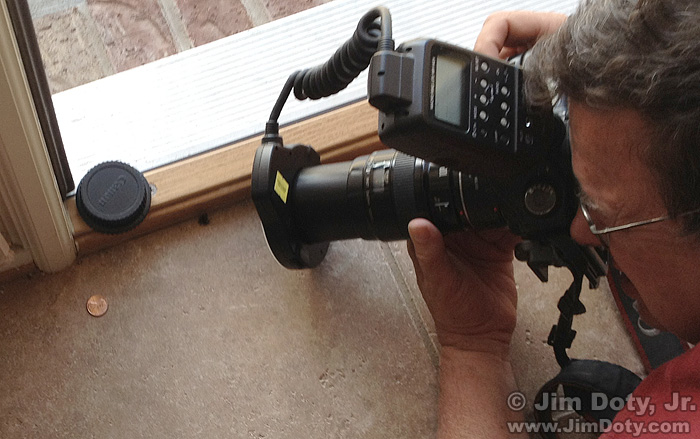I visited my two sons over Memorial Day weekend, and coincidentally, both of them have spiders living in their homes (with their blessings).
My first stop was to visit my son and his family who are living in southern Iowa. While I was there, he told me to be careful not to hurt the jumping spider living in their kitchen. The spider is living there with “protected status” since it is essentially harmless to humans and eats insects they don’t want around their home. He showed me the spider and I took the photo above.
From Iowa, I drove to central Kansas to visit my son and his family who are living there. When I arrived, I was told to be careful not to step on the jumping spider that is living in their entryway (photo below). I had to remember to look down every time I went in and out the front door so I wouldn’t step on it. This spider has protected status too, and for the same reasons. It is small, about half the diameter of a penny.
Someone raised these boys well. 🙂
A quick image search failed to confirm the exact species of the Iowa kitchen spider. The Kansas entryway spider is a “Daring Jumping Spider” (Phidippus audax), also called a “Bold Jumping Spider”. The hairs on this spider’s legs have turned white so this spider is getting old. After the last molt they no longer have the gripping power of the hairs on their “feet” so they don’t climb very well and they don’t jump as much as a younger spider.
Jumping spiders have excellent vision compared to other spiders, and they are one of the most intelligent spiders. Some people keep them as pets and they are nice to have around the house. Seriously. I think I need to find a jumping spider to live in my home.
You can learn more about jumping spiders as pets (caged or free roaming) at this site.
I used the same equipment for both photos, a Canon 5D body, a Canon EF 100mm macro lens on a 25mm extension tube, and Canon MR-14EX ring flash. You can see the semi-circular lights of the ring flash reflecting in the eyes of the Daring Jumping Spider. With the macro lens fully extended and a 25mm extension tube, magnification on the sensor is bigger than life size (1X plus). Both of these photos were also cropped.
At high magnifications, you set the magnification you want on the lens, and you move the camera/lens combination backwards and forwards until your subject come in to focus. At 1x (life size) and larger magnifications, this take a bit of practice. A few millimeters movement either way is the difference between being in focus and totally out of focus. At these magnifications, depth of field is minimal, even at small apertures like f/16 or f/22. You can see me photographing the Kansas spider in the iPhone photo below.
You can learn more about closeup photography in my book, Digital Photography Exposure for Dummies. You can read about it here and buy it at Amazon.com.



